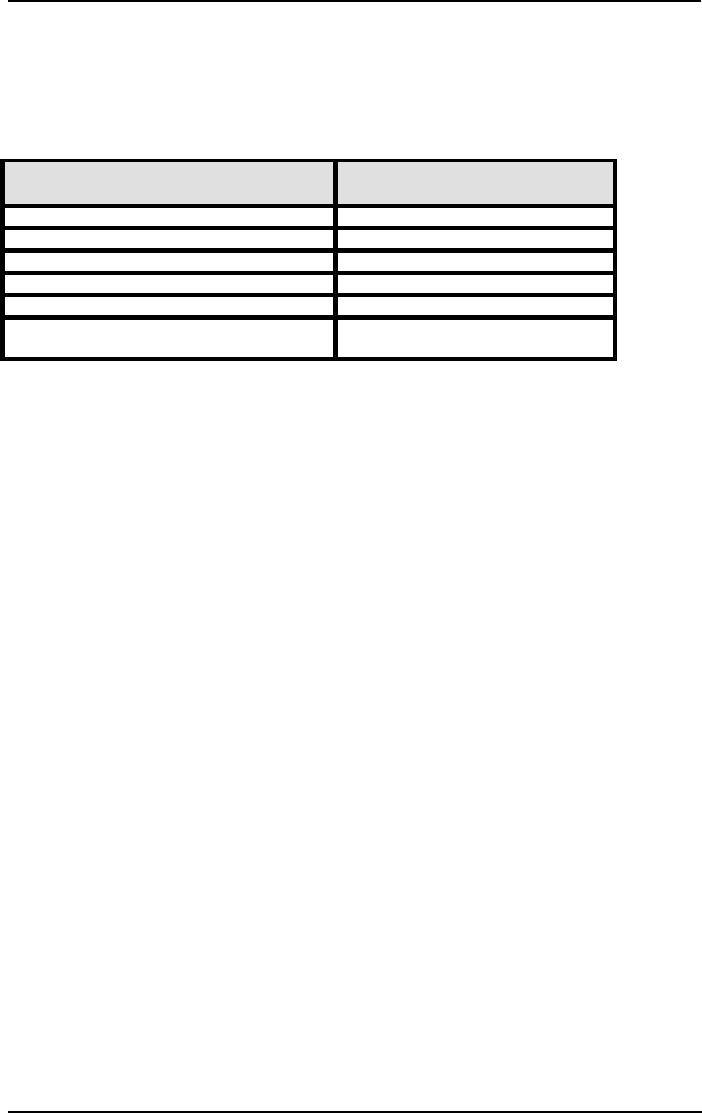 |

Leadership
& Team Management MGMT
623
VU
Lecture
32
CONFLICT
IN TEAM
Conflict
in Team: The
process in which one party perceives
that its interests are
being opposed or
negatively
affected by another party.
o
Perceived by the
parties
o
Parties
are in opposition to one another
o
At
least one party is blocking
the goal attainment of the other
party
o
Goals
can be tangible or
psychological
o
Money
o
Task
Achievement
o
Happiness
There
are several common themes which
underlie most
definitions:
o
The
parties to it must perceive
conflict.
o
Commonalties
in the definitions are opposition or
incompatibility and some form
of
interaction.
We
define conflict as "a process
that begins when one party
perceives that another party has
negatively
affected,
or is about to negatively affects, something
that the first party cares
about."
o
This
describes that point when an
interaction "crosses over" to
become an inter-party
conflict.
o
It
encompasses the wide range of conflicts
that people experience in
organizations.
Sources
of Conflict:
o
Goal
Incompatibility
o
Different
Values and Beliefs
o
Task
Interdependence
o
Scarce
Resources
o
Ambiguity
o
Communication
Problems
o
Perceived personal
threats
o
Perceived
threat to the organization
o
Personal,
social, cultural differences
o
Others...
The
three major sources of interpersonal and
inter group conflict are
differentiation, task
relationships,
and
scarcity of resources.
Differentiation:
o
Differentiation
in an organization occurs when
people and tasks are
grouped or split up
into
functions
and divisions to produce goods and
services.
o
The
splitting process produces
conflict because it makes the
differences in functional
orientations
and status inconsistencies
apparent.
o
Differences
in Functional Orientations.
o
Different
functions commonly develop
different orientations toward
the
Organization's
major priorities.
o
Their
views of what needs to be done to
increase organizational
performance
differ because their tasks,
jobs, and goals
differ.
o
Different
views of priorities
develop.
o
These
differences can lead to
conflict that can do considerable harm to
the
organization's
cohesiveness and functional integration
performance is reduced.
Status
Inconsistencies:
o
o
Over
time, some functions or
divisions come to see
themselves as more vital
than
others to an organization's operations and
believe that they have
higher
status
or greater prestige in the organization.
134

Leadership
& Team Management MGMT
623
VU
o
High-status
functions make little attempt to adapt
their behaviors to the
needs
of
other functions, thereby causing
conflict.
Task
Relationships:
o
Task
relationships generate conflict between
people and groups because
organizational
tasks
are interrelated and affect
one another.
o
Overlapping
Authority. If two different
functions or divisions claim
authority for the
same
task, conflict may
develop.
o
Task
Interdependence.
o
The
development of goods and services
depends on the flow of work
from
one
function to another; each
function builds on the contributions of
other
functions.
o
If one
function does not do its
job well, the ability of the
function next in
line
to perform is compromised, and the outcome is likely
to be conflict.
o
As
task interdependence increases from
pooled, to sequential, to
reciprocal
interdependence,
the potential for conflict among
functions or divisions is
greater.
Incompatible
Evaluation Systems.
o
o
Inequitable
performance evaluation systems that
reward some functions
but
not others sometimes create
conflict.
o
Complex
task relationships increase
this form of
conflict.
Scarcity
of Resources:
Competition
for scarce resources
produces conflict.
o
Budget
fights can be fierce when
resources are scarce.
o
Communication:
o
Communication
as a source of conflict represents
those opposing forces that
arise
from
semantic difficulties, misunderstandings, and
"noise" in the communication
channels.
o
Differing
word connotations, jargon,
insufficient exchange of information,
and
noise
in the communication channel are all
barriers to communication and
potential
antecedents
to conflict.
o
Semantic
difficulties are a result of
differences in training, selective
perception,
and
inadequate information.
o
The
potential for conflict
increases when either too
little or too much
communication
takes place.
o
The
channel chosen for communicating
can have an influence on
stimulating
opposition.
Different
Values and
Beliefs:
o
Include
individual value systems and
personality characteristics.
Certain
personality
types lead to potential
conflict.
o
Most
important is differing value
systems. Value differences
are the best
explanation
for differences of opinion on
various matters.
Types
of Conflict:
o
Emotional
is personal, defensive, and resentful.
Also known a A-type or
affective.
o
Cognitive
-
is largely depersonalized, it consists of
argumentation about the merits of
ideas,
plans, and projects. Known as C-type.
Often an effective stimulate to
creativity.
We
can have a different type of
conflict classification with reference to
organizational setup.
Task
conflict: Conflict
over content and goals of the work. Low
to moderate levels can
be
o
acceptable
Relationship
conflict: Conflict
based on interpersonal relationships.
Almost always
o
dysfunctional
Process
conflict: Conflict
over how work gets done.
Low levels can be
acceptable
o
135

Leadership
& Team Management MGMT
623
VU
We
can also have relationship
conflict (A-type
conflict) and task
conflict (C-type
conflict). We need
to
put
efforts for transforming
relationship into task
conflict. This can be done
through.
o
Agree
on common goal or shared
vision
o
Create
a place for conflict and get it out in
the open
o
Training
in task conflict
We
can also have conflicts
known as;
Intrapersonal:
o
A
person having tension or
stress within...
o
Often
due to over competing roles
Interpersonal:
o
Between
2 or more people,
o
Disagreement,
values or styles don't match
o
Miscommunication
occurs
Intra-group:
o
Arises
within one group
Inter-group:
o
Arises
between groups over issues/goals/solutions
The
Conflict Process:
Four
Stages
o
Potential
opposition
o
Cognition
and personalization
o
Behavior
o
Outcomes
Stage
I: Potential Opposition or Incompatibility
Communication
o
o
Communication
as a source of conflict represents
those opposing forces that
arise
from
semantic difficulties, misunderstandings, and
"noise" in the communication
channels.
o
Differing
word connotations, jargon,
insufficient exchange of information,
and
noise
in the communication channel are all
barriers to communication and
potential
antecedents
to conflict.
o
Semantic
difficulties are a result of
differences in training, selective
perception,
and
inadequate information.
o
The
potential for conflict
increases when either too
little or too much
communication
takes place.
o
The
channel chosen for communicating
can have an influence on
stimulating
opposition.
Structure
o
o
The
term structure includes variables such as
size, degree of
specialization,
jurisdictional
clarity, member-goal compatibility, leadership styles,
reward
systems,
and the degree of
dependence.
o
Size
and specialization act as forces to
stimulate conflict. The
larger the group and
more
specialized its activities, the greater the
likelihood of conflict.
o
The
potential for conflict is
greatest where group members
are younger and
turnover
is high.
o
The
greater the ambiguity in responsibility
for actions lies, the greater the
potential
for
conflict.
o
The
diversity of goals among groups is a major
source of conflict.
136

Leadership
& Team Management MGMT
623
VU
o
A
close style of leadership increases
conflict potential.
o
Too
much reliance on participation
may also stimulate
conflict.
o
Reward
systems, too, are found to
create conflict when one member's
gain is at
another's
expense.
o
Finally,
if a group is dependent on another group,
opposing forces are
stimulated.
o
Personal
Variables
o
Include
individual value systems and
personality characteristics.
Certain
personality
types lead to potential
conflict.
o
Most
important is differing value
systems. Value differences
are the best
explanation
for differences of opinion on
various matters.
Stage
II: Cognition and Personalization
o
Antecedent
conditions lead to conflict
only when the parties are
affected by and
aware
of it.
o
Conflict
is personalized when it is felt and when
individuals become
emotionally
involved.
o
This
stage is where conflict issues
tend to be defined and this
definition delineates
the
possible settlements.
o
Second,
emotions play a major role in shaping
perceptions.
o
Negative
emotions produce oversimplification of issues,
reductions in
trust,
and negative interpretations of the other
party's behavior.
o
Positive
feelings increase the tendency to see
potential relationships
among
the elements of a problem, to
take a broader view of the
situation,
and
to develop more innovative
solutions.
Stage
III: Behavior
o
Stage
IV is where conflicts become visible.
The behavior stage includes
the statements, actions,
and
reactions made by the conflicting parties.
These conflict behaviors are
usually overt attempts
to
implement
each party's
intentions.
o
Stage
IV is a dynamic process of interaction;
conflicts exist somewhere
along a continuum
o
At the
lower part of the continuum,
conflicts are characterized by subtle,
indirect, and highly
controlled
forms of tension.
o
Conflict
intensities escalate as they
move upward along the
continuum until they become
highly
destructive.
o
Functional
conflicts are typically
confined to the lower range of the
continuum.
Stage
IV: Outcomes
Introduction
Outcomes
may be functional--improving group
performance, or dysfunctional in
o
hindering
it.
Functional
Outcomes
o
How
might conflict act as a
force to increase group
performance?
o
Conflict
is constructive when
it:
o
Improves
the quality of decisions.
o
Stimulates
creativity and
innovation.
o
Encourages
interest and curiosity.
o
Provides
the medium through which problems
can be aired and
tensions
released.
o
Fosters
an environment of self-evaluation and
change.
o
The
evidence suggests that conflict
can improve the quality of
decision making.
o
Conflict
is an antidote for
groupthink.
o
Conflict
challenges the status quo, furthers the
creation of new
ideas,
promotes
reassessment of group goals and
activities, and increases
the
probability
that the group will respond
to change.
o
Research
studies in diverse settings confirm the
functionality of conflict.
137

Leadership
& Team Management MGMT
623
VU
The
comparison of six major decisions made
during the
administration
of four different U.S.
presidents found that
conflict
reduced
the chance of groupthink.
When
groups analyzed decisions that had been
made by the
individual
members of that group, the
average improvement
among
the high-conflict groups was 73 percent greater
than was
that
of those groups characterized by low-conflict
conditions.
o
Increasing
cultural diversity of the workforce
should provide benefits
to
organizations.
Heterogeneity
among group and organization members
can
increase
creativity, improve the quality of
decisions, and facilitate
change
by enhancing member flexibility.
The
ethnically diverse groups produced more
effective and more
feasible
ideas and higher quality,
unique ideas than those
produced
by
the all-Anglo group.
o
Similarly,
studies of professional systems
analysts and research and
development
scientists
support the constructive value of
conflict.
o
An
investigation of 22 teams of systems
analysts found that the more
incompatible
groups
were likely to be more productive.
o
Research
and development scientists have been
found to be most productive
where
there
is a certain amount of intellectual
conflict.
Dysfunctional
Outcomes
o
Uncontrolled
opposition breeds discontent, which
acts to dissolve common ties and
eventually
leads to the destruction of the
group.
o
Undesirable
consequences:
A
retarding of communication
Reductions
in group cohesiveness
Subordination
of group goals to the primacy of
infighting between
members
o
Conflict
can bring group functioning
to a halt and potentially threaten the
group's
survival.
o
The
demise of an organization as a result of
too much conflict is not as
unusual as
it
might first appear.
Creating
Functional Conflict
o
If
managers accept the interactionist
view toward conflict, they
encourage
functional
conflict.
o
Creating
functional conflict is a tough
job, particularly in large
American
corporations.
o
A
high proportion of people
who get to the top are
conflict avoiders.
o
At
least seven out of ten
people in American business
hush up when their
opinions
are
at odds with those of their
superiors, allowing bosses to make
mistakes even
when
they know better.
o
Such
anti-conflict cultures are not
tolerable in today's fiercely
competitive global
economy.
o
This
process frequently results in decisions
and alternatives that
previously had not
been
considered.
o
One
common ingredient in organizations that
successfully create functional
conflict
is that they reward dissent
and punish conflict
avoiders.
o
The
real challenge for managers
is when they hear news
that they do not want
to
hear.
People
Factors That Affect the
Development of the
Conflict:
o
Needs
and wants
o
Self-concept
o
Past
experience
o
Health
138

Leadership
& Team Management MGMT
623
VU
Other
Factors That Affect the
Development of the
Conflict:
o
Management
culture
o
Stage
of development of the organization
o
Organizational
structures
o
State
of business
o
Weather
Consequences
of Conflict
Positive
Consequences
Negative
Consequences
Leads
to new ideas
Diverts
energy from work
Stimulates
creativity
Threatens
psychological well-being
Motivates
change
Wastes
resources
Promotes
organizational vitality
Creates
a negative climate
Helps
individuals & groups establish
identities
Breaks
down group cohesion
Serves
as a safety valve to indicate
problems
Can
increase hostility &
aggressive
behaviors
Is
Conflict Bad? There are Different
Views:
Traditional
View
o
Conflict
is bad
o
Same
as violence, destruction,
irrationality
Human
Relations View
o
People
work together, conflict is
inevitable.
o
It's
going to happen, so cope with
it!
Interactionist
View
o
Functional
conflict is good for
business and even encouraged
o
Functional
vs. dysfunctional
conflict
o
Functional
conflict that supports and
improves the performance of a
group.
o
Dysfunctional
conflict destructive forms of
conflict that disrupt a
group's performance.
Is
Conflict Good or
Bad?
Functions
of Conflict
o
o
Synergy
o
Promotion
of change
o
Promotes
goal achievement
o
Dysfunctions
of Conflict
o
Wasted
time & energy
o
Stress
o
Detracts
from the goal of the
group
Organizational
Conflict Outcomes
Dysfunctional
outcomes
o
o
Diverts
energy and resources
o
Encourages
organizational politics
o
Encourages
stereotyping
o
Weakens
knowledge management
Potential
benefits
o
o
Improves
decision making
o
Strengthens
team dynamics
Conflict
Resolution Techniques:
139

Leadership
& Team Management MGMT
623
VU
o
Competing
o
Avoiding
o
Compromising
o
Withholding
or withdrawing
o
Confronting
o
Smoothing
over/reassuring
o
Collaborating
o
Accommodating
o
Bargaining/negotiating
o
Forcing
o
Problem-solving
Three
Styles of Resolving
Conflict:
Win-Lose:
strategies
used are power, dominance,
forcing.
Lose-Lose:
common
strategy used is compromise.
Win-Win:
strategies
used are integration,
collaboration, and
problem-solving.
Characteristics
of High Performing
Teams:
o
Common
Purpose
o
Crystal
Clear Roles
o
Accepted
Leadership
o
Effective
Processes
o
Solid
Relationships
o
Effective
Communication
Strategies
to Enhance Cooperation and Minimize
Competition
o
Build
team identity
o
Build
Trust and Share
Information
o
Ask
Questions
o
Appeal
to Norms of Justice
�
Equity
�
Equality
�
Need
o
Fairness-Based
Arguments
�
Simple
�
Clear
�
Justifiable
�
Popular
�
General
Steps
to Resolve Conflict:
o
Identify
the Problem--separate it
from the people involved--use
cause and effect
analysis
o
Gather
and Analyze Data--fact-based
management
o
Clarify
the Interests of
Parties--as opposed
to the positions of parties
o
Determine
Objective Criteria to Evaluate Fairness
of Outcomes--boundary
conditions
o
Identify
New and Creative Options--to resolve
the conflict
o
Choose
an Option--using
team decision-making
tools.
The
3-Cs and 3-Rs of Conflict Resolution
are-
o
Commitment
o
Cooperation
o
Compromise
o
Respect
o
Rights
o
Responsibility
Learn
Cooperation from the
Animals:
We
can observe from animal
behavior the cooperation, dedication,
teamwork and concept of
leadership.
I
have dedicated the last lecture of our
course on this very
important aspect. That is
learning from
nature.
140
Table of Contents:
- INTRODUCTION, ORGANIZATION THE STAGE FOR LEADERSHIP:Challenges, Value creation
- FOCUSING ON PEOPLE: THE KEY TO SUCCESS:People in the Process, Developing and Sustaining A World-class Workforce
- LEADERSHIP:Characteristics of Successful Leader, Why Study Leadership?
- LEADERSHIP (CONTD.):Characteristics of Leaders Who Fail, Why Leaders Fail?
- MANAGERS VS LEADERS:Characteristics, Effective Leadership, Respect for Diversity
- FOLLOWER-SHIP:Importance of Followers, Follower-ship Style
- LEADERSHIP PROCESS:Strategies for Cultivating Exemplary Followers, Important Traits of Leaders
- LEADERSHIP PROCESS (CONTD.):Qualities of Leaders, Self-Confidence, Integrity
- LEADERSHIP THEORIES/ APPROACHES:Personal Characteristics of Leaders, Managerial Grid
- CONTINGENCY THEORIES OF LEADERSHIP:The Fiedler Model, Situational Leadership Theory, Path-Goal Theory
- TRANSACTIONAL, CHARISMATIC AND TRANSFORMATIONAL LEADERSHIP:Visionary Leadership
- THE LEADER AS AN INDIVIDUAL:Personality, Situation, Heredity, Environment
- ATTITUDE-PERSONALITY:Job Satisfaction, Work Situation, Self - Monitoring
- BIG FIVE MODEL, MYERS BRIGGS TYPE INDICATOR (MBTI):Sub-Categories Defined, Information Gathering
- SITUATIONAL FACTORS:Social and psychological climate, Culture of the organization
- BECOMING A LEADER! WHAT DOES IT MEAN & HOW DO YOU GET IT?:Mission Statement, Leading oneself
- BECOMING A LEADER:Elements of Leadership, CONCEPT OF POWER,
- UNDERSTANDING POWER:Sources of Power, Responses to the Use of Power, Managing Political Behavior
- LEADERSHIP POWER & INFLUENCE:Positional Power, Being an Effective Leader
- LEADERSHIP AND EMPOWERMENT:Power sharing and Empowerment, Share Information
- MOTIVATION:Guidelines for Delegating, Human Resource Approach
- MOTIVATION AT WORK, MOTIVATION AND LEADERSHIP:What Factors Diminish Motivation in the Workplace
- LEADERSHIP COMMUNICATION:Communication & the Four Management Functions
- REVIEW-1:Organizational Performance, That is the Role of Management?, Leaders Vs Managers
- GROUP & TEAM CONCEPT:Groups versus Teams, Deciding When to Use a Team
- TEAM DYNAMICS:Stages of Group Development, Problem-Solving Teams, Benefits of Teams
- BUILDING THE TEAM:Leadership success requires, Strategies for Team Building
- A TEAM-BASED ORGANIZATION:Basic Steps, Span of Control, Categories of Decisions
- DECISION MAKING:Categories of Decisions, The Decision-Making Process
- TEAM DECISION MAKING:Team Problem Solving Techniques, Concept of QC
- EFFECTIVE TEAM COMMUNICATION:Team/Group Communications
- CONFLICT IN TEAM:Sources of Conflict, Scarcity of Resources, Dysfunctional Outcomes
- TRAINING/LEARNING OF TEAM:Training Methods, Phases of Learning Cycles
- LEARNING ORGANIZATION:A Litmus Test, Work Relations
- REWARDING & RECOGNIZING TEAMWORK:Compensating Teams, Individual or Team Rewards?
- MANAGING/LEADING VIRTUAL TEAMS:Communications in Virtual Organizations, Virtual Leadership
- EFFECTIVE TEAM MEETINGS:Better Meetings, Meeting Roles, Meeting Room Facilities
- LEADING TEAM:Team Leadership Structures, Leadership Demands and Duties, Leadership Direction
- REVIEW-II:Types of Teams, Characteristics of High Performance Teams, Sources of Conflict
- STRATEGIC LEADERSHIP:Strategic Management, Determining Strategic Direction, Developing Human Capital:
- LEADING CHANGE:Dynamics of Change, Change Models, Unfreeze
- CREATIVE LEADERSHIP:Awaken Your Senses, How Might These Definitions Be Integrated
- ETHICS IN LEADERSHIP:Character Traits Reflect Ethics, Manifests Honesty
- LOOKING AT THE FUTURE: WHAT COMES NEXT:Benefits of Teams, Ethical Leadership,
- TEAMWORK: LEARNING FROM NATURE:Social Behavior, Termites, Learning from Nature